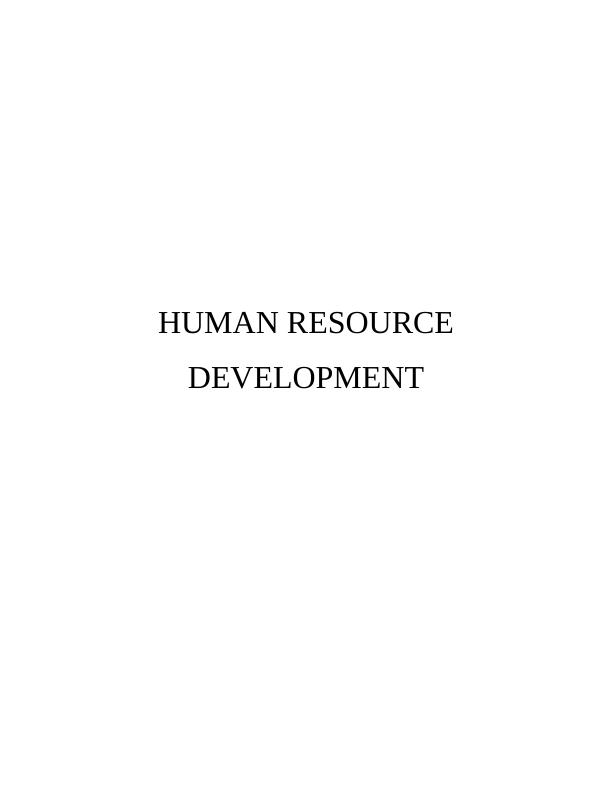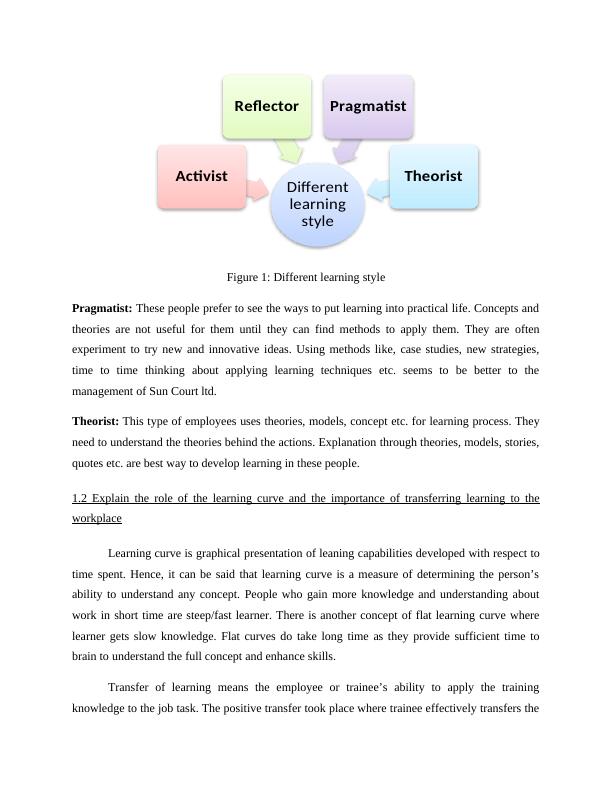Role of Government in Training and Development
Compare different learning styles, explain the role of learning curve & the importance of transferring learning to the workplace, assess the contribution of learning styles and theories when planning and designing a learning event, compare the training needs for staff at different levels in an organisation, assess the advantages and disadvantages of training methods used in an organisation
Added on 2023-04-05
About This Document
Role of Government in Training and Development
Compare different learning styles, explain the role of learning curve & the importance of transferring learning to the workplace, assess the contribution of learning styles and theories when planning and designing a learning event, compare the training needs for staff at different levels in an organisation, assess the advantages and disadvantages of training methods used in an organisation
Added on 2023-04-05
End of preview
Want to access all the pages? Upload your documents or become a member.




